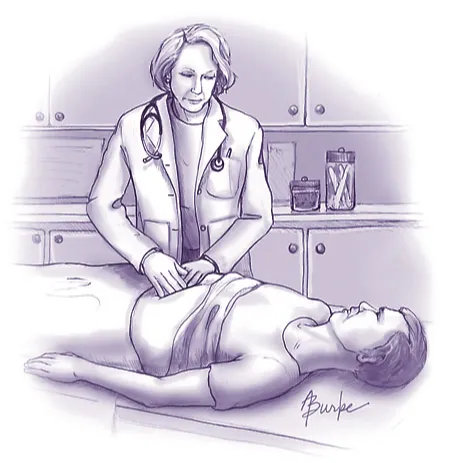Anesthesia Journal of Nursing

The Unmeasured Discomfort: Shivering in PACU and The Use of a Bedside Shivering Assessment Scale
Tags: anesthesia Hypothermia nurse training Post-Anesthesia Care Surgical Recovery
Postoperative shivering is a common complication of general anesthesia. This can cause patient pain, distress, and hemodynamic changes. Nurses should use a BSAS to assess the severity of shivering and take appropriate interventions to minimize this with pharmacological and non-pharmacological methods.
Read More →
Capnography: A Missed Vital Sign in Post Anesthesia Care Units
Tags: anesthesia nurse opiods PACU
Capnography provides essential data on how well a patient is ventilating regardless of what the oxygen saturation monitor is reading. This is an under-utilized tool that can detect adverse respiratory events such as hypoventilation leading to hypoxia. Capnography is a non-invasive nasal cannula that sits just below the nose and captures end-tidal carbon dioxide. Nurses should make it a standard of practice to implement capnography for all patients who arrive into the PACU.
Read More →
Perioperative Fasting Guidelines as it relates to ERAS Protocol: Exploring Existing Modalities
Tags: anesthesia carbohydrate-rich drinks ERAS protocol NPO perioperative Perioperative fasting
For the longest time, any procedure requiring anesthesia was accompanied with perioperative instructions mandating a fast from midnight until the surgery. However, anyone that’s lived long enough has learned to understand that just because something has been done for a long time, it doesn’t mean it should be done for the rest of time. With technological advances and improvements in research, medical practices and patient instructions should evolve. Here, we’ll explore the rationale behind the old modality as it pertains to preoperative care and instructions, what’s changed in research and technology, and finally, what new modalities should be learned, taught, and implemented.
Read More →
A Review of the Treatment for Postoperative Nausea and Vomiting
Tags: anesthesia health care professionals nausea PACU post-op risk factors treatment options vomiting
Common treatments reviewed for the treatment of postoperative nausea and vomiting, mostly in the PACU phase of care.
Read More →
Regional anesthesia; A quick introduction
Tags: anesthesia bsn professional rn Regional anesthesia
This article offers a small introduction and overview regarding regional anesthesia. You have nerves that run all through your body. Nerves provide a pathway for impulses to communicate between the brain and other parts of your body. Not only do your nerves tell your muscles to move, they tell your brain when something is painful.
Read More →
Multimodal Analgesia: Ways to Take Away the Pain
Tags: analgesia anesthesia multimodal pain management Regional anesthesia
This article addresses ways to use multimodal analgesia such as opioids, anti-inflammatories, regional anesthesia, etc to achieve greater pain control in patients.
Read More →
Young and Healthy in the PACU
Tags: anesthesia Healthy PACU
Some patients in the post anesthesia care unit (PACU) are young and or very healthy. These qualities sometimes give the impression that there will not be complications from surgery or anesthesia. This is not always the case. These patients may be overlooked for experiencing complications because they are healthy. I have seen a number of patients who have no health problems experience side effects from anesthesia and surgery.
Read More →
Anesthesia Awareness for Perioperative Nurses
Tags: anesthesia awake awareness perioperative
Anesthesia awareness definition is an unexpected recall of events while under general anesthesia. The majority of the authors place the rate of anesthesia awareness to one patient out of every one thousand patients that experience some form of anesthesia awareness, however the exact mechanism of the pharmacological action of anesthetic is not clearly understood.
Read More →
Medication Induced Bradycardia
Tags: anesthesia bradycardia labetolol medicine PACU pain
In medicine there is never a playbook about how things are going to unfold and this is especially true when it comes to recovering from surgery and anesthesia. For example, sometimes as nurses we give medications to treat one symptom and unintentionally cause another.
Read More →
Foley Catheters in Men and Women: Lubrication, Anesthesia, and Attitude: A Randomized Trial
Tags: anesthesia catheters comfort
Foley insertion in alert patients not in retention: males benefit from lidocaine jelly. All staff appear to underestimate discomfort.
Read More →
Spinal Block versus Epidural Block
Tags: anesthesia Epidural epidural vs spinal block Regional anesthesia Spinal Block spinal block vs epidural
Spinal anesthesia, also called spinal analgesia, sub-arachnoid block (SAB) or intrathecal, is a form of regional anesthesia involving an injection of a local anesthetic into the cerebral spinal fluid with a fine needle. The term epidural is often short for epidural anesthesia, a form of regional anesthesia involving injection of drugs through a catheter placed into the epidural space. The injection can cause both a loss of sensation (anesthesia) and a loss of pain (analgesia), by blocking the transmission of signals through nerves in or near the spinal cord.
Read More →Get Published for Free
Browse by Tag
advocate aging anesthesia behavior cardiac care Case Study child children clinical compassion COVID-19 critical care death diabetes disease education emergency department end of life ethical principles ethical values ethics future of nursing health health care ICU medication mental health nurse Nurse Education nursing nursing education nursing ethics nursing faculty nursing school nursing students PACU patient care patient outcomes patient safety pediatric poem profession risk factors stress student nurse students teaching therapy treatment
Most Popular Last Month
More from RN Journal
Bearers of Light - A Poem
The Role of Technology in Modern Nursing: Transforming Patient Care
The Challenge of MSA: Multiple System Atrophy
Scope of Advanced Practice for Nurses in the United Kingdom
True Suffering In An ICU
Top Trends in Healthcare Technology That Are Changing Patient Care
Strategies for Recruiting PhD in Nursing Students: Perspectives from a PhD in Nursing Graduate
Building Trusting Work Relationships in Healthcare and Beyond
Nursing School Angel









